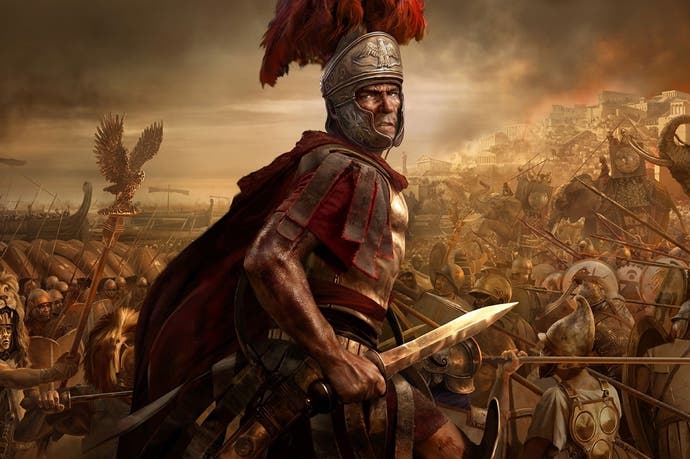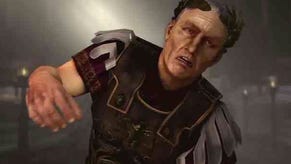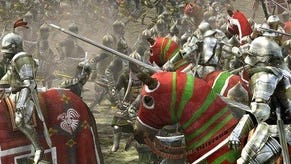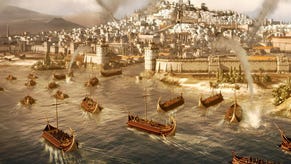Total War: Rome 2 preview - Fights of the old republic
What you can expect from both the battlefield and the campaign map.
If you ever see an elephant in the wild, I really think you want to be standing behind it rather than in front of it. Standing behind it when it charges is dazzling, in fact - at least if Total War: Rome 2 is anything to go by.
Rome 2 features a new close-up unit camera, and it allows you to swoop across a vast battlefield and plonk yourself right behind any of your individual squads. Tag yourself to an elephant team in full pelt, and you get a real sense of the seismic horrors at your command. Everything's so big, so detailed! You can see the folds in the elephants' grey skin, while the chinks and dings in the armour of the enemy soldiers you're rushing towards really drives home the fact that these guys are, y'know, paid to stand in front of elephants for a living. War is terrible! the unit camera declares. And war is brilliant!
It's all part of a wider approach. The latest Total War sees you taking charge of the Roman Republic and leading it, hopefully, to some manner of glory, and it wants to make that process personal - wincingly, skull-crunchingly personal - without sacrificing any of its massive scope. Hence micro-management tweaks like getting right down on the ground with your troops (close enough to watch new animations as they freak out in combat, scatter when the line is broken, and sail through the air post-elephant-rush), and its equal and opposite addition, the ability to pull out from the battle to a brand new tactical view, where you can look over a whole arena of shifting icons, SupComm-style, and get the lay of the land before zooming back in wherever you're needed the most.
Your powers within tactical view are currently limited to just moving units about, because the design team doesn't want you to spend the whole time up in the sky. Its lofty abstraction offers a palpable widescreen thrill, though: you see the entire sweep of the game's battle scenarios: naval and land units working together for the first time, multi-front fighting with huge armies, bloodshed that's dependant on both the brilliance of the commanders and the natural features of the landscape.
A clash between Ptolemy and Caesar is a case in point. Rome's attacking Egypt here, and Caesar's literally got an uphill battle on his hands. He's parked, with a decent range of units, at the bottom of a considerable slope, with the objective of capturing the enemy base at the top. He's got ships off to the right who can deploy additional troops if they can make it to the beaches, but the Egyptians have their own ships protecting two promising landing zones. Oh, and Ptolemy's at the top of the hill with elephants, fire archers, and a bunch of huge rocks he can't wait to send rolling down on his foes.

So Rome's going to have to do some flanking, while Egypt goes bowling. I've played this scenario from both angles - a nice, satisfying victory for Ptolemy, a miserable crushing defeat for the salad dressing dude - and it's rich enough and complex enough to ensure it's been replaying itself in my mind ever since. Could I have gotten Rome to the top of that hill?
You'd be forgiven for initially thinking that the naval battle and the land battle have little to do with each other - or rather, that they're both crucial but entirely separate skirmishes. That's not the case, though: Caesar's slightly out-matched on the seas, perhaps, but the thing that's really stopping him from landing his ships safely is a range of ballistae on a ridge up at the top of the hill, firing lumps of burning death into their sails every few seconds.
Reworking the map in my mind, I wouldn't mind sending a few of my own elephants at those guys. I'd be weaker in my central attack, of course, but then I might be able to land troops practically behind the enemy base. That's the kind of pincer move I'd be happy to lose a few units to. That means I could then focus on taking out those scythe chariots, and...
Sorry, I got carried away. My point, I think, is that this new split focus - real strategic clarity at one end of the spectrum, hideous up-close tactical pay-off at the other - only deepens the murderous thrills that Total War already provides. Throw in an approach to generating battle maps that includes an emphasis on verticality - and on slotting hand-designed chunks of playing field together in clever ways to give even procedural maps an authored feel - and you're looking at a very special RTS in the making.
And the same philosophy - tweaks to both macro- and micro-management - has been applied to the wider game, too. Switching from the battlefield to the campaign map - it covers the full scope of Europe, a chunk of North Africa, and stretches all the way over to Bactria (or northern Afghanistan) in the east - reveals a Total War game filled with elegant refinements. The number of regions has been dramatically boosted for Rome 2, which allows you a real sense of power as you accrue territory, but they're grouped into provinces to stop them from becoming unwieldy.
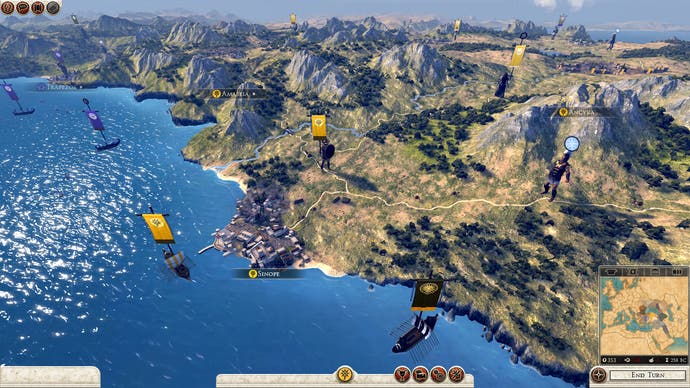
Capture the entirety of a province, then, and you're allowed to lay on a few perks and local bonuses in the form of the game's edict system, but you also get to benefit from a centralised capital region, which handles all the bureaucratic stuff while the surrounding territories focus on production. This should streamline management without diminishing scope, and it could hopefully quash the Total Siege end-game of some previous Total Wars, too.
Elsewhere, the new interfaces are still going in, but it should be easy to check the progress of your faction - Rome is divided into three rival families - and it's relatively simple to keep an eye on deeper systems such as how much political capital you have at any one time and how you can spend it. Amongst other things, political capital's handy for tackling the many problems that randomly pop up over the course of one turn to the next. Here comes Cicero, doing all manner of classical-era mic drops about you in the senate. How do you want to deal with him? Support him? Extort him? Discredit him? Or why not just have him assassinated?
Speaking of bloodshed, your armies are as much fun off the battlefield as they are on it. Alongside a series of stances you can select for them, ranging from a forced march to the ability to set ambushes, there's a new tradition system that focuses on building a legacy for your legions. In the new game, these are more than the sum of their parts - even if all your men are lost in battle, the legion itself will prevail.
It's that business of making war personal again: each legion has its own experience meter through which you can earn points to spend on traditions - one might give a bonus to heavy infantry units, say, or engineering expertise. There are ten possible traditions in total, and you can try and capture a broad range, or you could pick a limited handful and then spend points levelling those up to create specialists (Generals can also be levelled up and can both learn new skills and pick up new traits.)
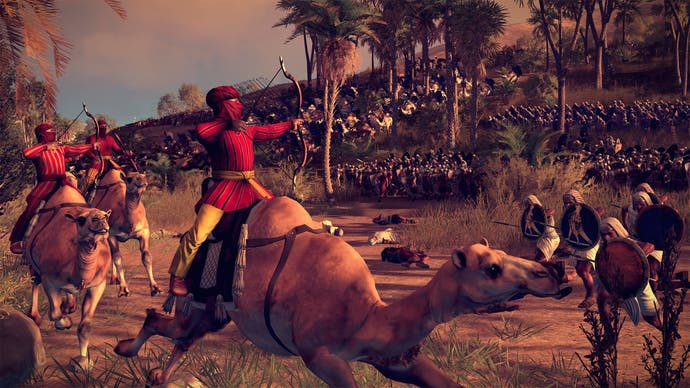
Elsewhere, there have been changes to the way that armies are recruited. You no longer have to recruit in cities and then march new troops over the map to where they're needed. You recruit them directly to the legion instead - and in enemy territory you can recruit mercenaries. The enemy factions, meanwhile, will now have specific personalities to mark them out and provide the grand strategy with a little extra dynamism. To counter the kind of confusion this can sometimes cause - to hedge against those moments when a range of variables within the AI generates seemingly crazy decisions - you can hover the mouse over a foe's relations meter and get a clear breakdown of what's going on under the hood. You can see what they think of your previous acts, say, and whether they're harbouring grudges. (They probably are.)
And on top of all the tweaks and additions, Rome 2's a beautiful game, too. Its battlefields are filled with hundreds of soldiers scuttling through the elements and scattering wildly when panicked; its campaign map is artfully cluttered with chunky landmarks and wandering animals that often hint at the kind of units that are going to be available for hire in specific spots. Even before you get to the incentives that Creative Assembly's working so hard to construct, in other words, this is already a world worth conquering.
